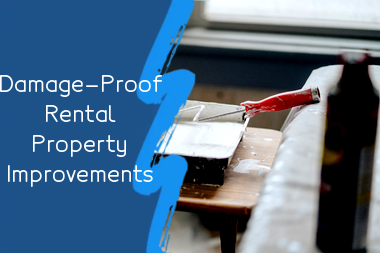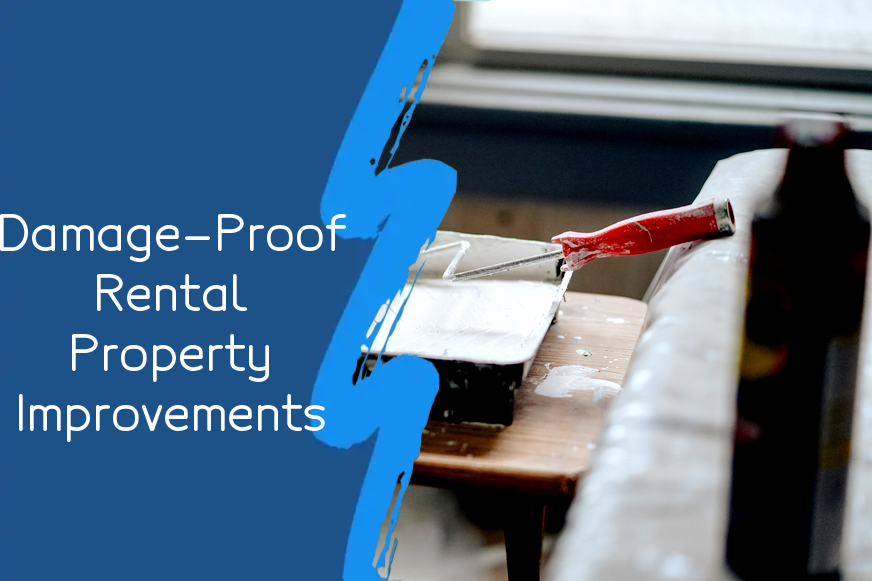Rental property improvements to fortify against damage are measures taken to strengthen a property against potential damage. These improvements can be made to both the interior and exterior of a property and serve the purpose of preventing or minimizing damage caused by natural disasters, wear and tear, or tenant negligence.
Some examples of rental property improvements to fortify against damage include:
- 1. Roof repairs: A strong and secure roof is essential to protecting a property from rainfall, hail, snow, and other weather elements. Regular roof repairs and maintenance can prevent leaks and other types of damage.
- 2. Window and door upgrades: Strong windows and doors can protect against strong winds, hail, and other weather elements. Upgrading to impact-resistant windows or installing storm shutters can help protect a property during severe weather.
- 3. Flooring upgrades: High-quality flooring can help prevent damage caused by tenants and everyday wear and tear. Durable materials like hardwood, tile, or vinyl can withstand heavy foot traffic and are less likely to show damage.
- 4. Landscaping: Maintaining the landscaping around a property can help prevent damage caused by fallen branches, flooding, and erosion. Proper drainage systems and gutter cleaning can also help prevent water damage.
- 5. Security upgrades: Installing security cameras, motion detectors, and high-quality locks can help prevent damage caused by theft or vandalism.
By investing in rental property improvements to fortify against damage, landlords can help protect their investment and ensure a safe and comfortable environment for their tenants.
Protecting rental property walls
Protecting rental property walls typically involves taking measures to prevent damage such as scratches, holes, or dents caused by accidental or intentional actions of tenants or visitors to the property. This can include:
- 1Regular inspection: Regularly inspecting the property, including walls, can help detect minor damages that can be quickly repaired before they grow into bigger problems.
- 2Use durable materials: One way to protect rental property walls is to use durable materials such as high-quality paints, wallpaper, or tiles, which are less prone to damages.
- 3Use wall protectors: Wall protectors are materials that help prevent scuffs, scratches or dents from furniture or other items that may come in contact with the wall. These can be in the form of plastic or metal corner guards, felt pads, or rubber feet.
- 4Set tenant guidelines: It is beneficial to set guidelines for tenants to follow, such as not hanging heavy objects on walls, avoiding nailing or drilling, and installing proper wall anchors when hanging items.
- 5Prompt repairs: Whenever there are damages to the walls, quick repairs can reduce the risk of the damage expanding and causing more significant issues.
In general, protecting rental property walls involves being proactive and taking preventive measures. This helps to keep the property in good condition, avoid costly repairs, and maintain the building's appeal and value.
Protecting rental property floors
Protecting rental property floors requires taking measures that prevent damage to the flooring of the rental property. These measures help prolong the lifespan of the flooring and prevent costly repairs or replacements. Here are some ways to protect rental property floors:
- 1. Use mats and rugs: Place mats at entrances and exits to catch dirt and debris from shoes. Rugs can be used in high traffic areas to prevent scratches and spills from damaging the flooring.
- 2. Require shoe removal: Have tenants remove their shoes before entering the rental property. This helps prevent dirt and debris from being tracked onto the floors.
- 3. Ban certain activities: Prohibit tenants from engaging in certain activities that could damage the floors, such as moving heavy furniture without proper protection.
- 4. Consider flooring options: When selecting flooring for rental properties, consider durable options such as vinyl or tile that are easy to clean and maintain.
- 5. Perform regular maintenance: Regularly clean and maintain floors to prevent buildup of dirt, scratches, and wear and tear.
In summary, protecting rental property floors requires implementing preventative measures, selecting durable flooring options, and performing regular maintenance.
How to protect everything else in your rental property.
In general terms, protecting everything else in your rental property could refer to the various security measures you can take to ensure the safety and security of your property and everything inside it.
Some ways to protect everything else in your rental property include:
- 1Installing security cameras: Surveillance cameras can provide a 24/7 watch over your rental property, allowing you to monitor any suspicious activity and protect against theft or vandalism.
- 2Securing windows and doors: Ensure that all windows and doors have sturdy and reliable locks that cannot be easily breached.
- 3Smoke detectors and carbon monoxide detectors: Installing smoke detectors and carbon monoxide detectors protect against potential fires and gas leaks, respectively.
- 4Regular maintenance of appliances: Maintaining appliances such as gas cookers, heating systems, and air conditioners can prevent potential hazards.
- 5Insurance: Rental property insurance can protect against damage caused by natural disasters, accidents, and other unexpected incidents.
Taking these measures can help ensure the safety and security of everything else in your rental property.
Final Word: Inspect the property every 6 months
Inspecting a property every 6 months is important for several reasons. Firstly, it helps to identify any maintenance issues that may have arisen since the last inspection. This allows for these issues to be addressed in a timely manner, before they become major problems that can be expensive to fix.
Secondly, regular inspections can help to deter tenants from causing damage to the property. Knowing that the property will be inspected regularly can encourage tenants to take better care of the property and avoid doing anything that may cause damage.
Thirdly, regular inspections can help to ensure that the property is being used in accordance with the lease agreement. This can include making sure that the number of occupants is within the agreed limit, that pets are not being kept in the property (if not allowed), and that the property is being used for residential purposes only.
Overall, conducting regular inspections can help to ensure that a property is well-maintained and that tenants are abiding by the terms of the lease agreement. This can help to protect the landlord's investment and ensure that the property remains desirable for future tenants.
Just one more thing: if you liked the article, please like us on social media and share this article with friends.



